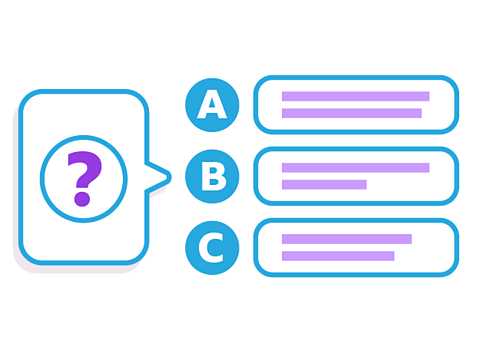Key points about conjunctions in Spanish

Conjunctions are also known as connecting words and can be used to avoid repetition.
English conjunctions include words such as and, but, or and because.
Common conjunctions in Spanish are: y (and), porque (because), pero (but), si (if) and que (that).
Use conjunctions with the subjunctive moodUsed to express desires, doubts, wishes, conjectures, emotions, and possibilities. to talk about possibility and probability.
What are conjunctions in Spanish?
In English, conjunctions are words such as and, but, or and because.
Conjunctions can be used to help avoid repetition.
Look at these two sentences:
Me gustan las patatas fritas. - I like chips.
Me gusta la ensalada. - I like salad.
These two sentences could be together by adding the conjunctionāÆy (and) and removing the repetition ofāÆme gustaāÆ(I like):
Me gustan las patatas fritasāÆyāÆla ensalada.āÆ- I like chipsāÆandāÆsalad.
Conjunctions can also be used to join together two simple sentences or ideas to form one extended sentence.
Look at these two sentences:
Me gustan los gatos. - I like cats.
No me gustan los perros. - I donāt like dogs.
The two sentences could be joined together by using either pero (but) or aunque (although).
Me gustan los gatos pero no me gustan los perros. - I like cats but I don't like dogs.
Me gustan los gatos, sin embargo, no me gustan los perros. - I like cats, although I don't like dogs.
Common conjunctions in Spanish
Common conjunctions in Spanish include:
| Sorry, something went wrongCheck your connection, refresh the page and try again. | and |
| Sorry, something went wrongCheck your connection, refresh the page and try again. | but |
| Sorry, something went wrongCheck your connection, refresh the page and try again. | or |
| Sorry, something went wrongCheck your connection, refresh the page and try again. | because |
| Sorry, something went wrongCheck your connection, refresh the page and try again. | like, as |
| Sorry, something went wrongCheck your connection, refresh the page and try again. | when |
| Sorry, something went wrongCheck your connection, refresh the page and try again. | if |
| Sorry, something went wrongCheck your connection, refresh the page and try again. | that |
| Sorry, something went wrongCheck your connection, refresh the page and try again. | although, even though |
| Sorry, something went wrongCheck your connection, refresh the page and try again. | while, whilst |
Examples:
Escucho mĆŗsica mientras lavo los platos. - I listen to music while I wash the dishes.
Es el libro que prefiero. - Itās the book that I prefer.
Conjunctions can sometimes come at the start of the sentence. The most common ones are Sorry, something went wrongCheck your connection, refresh the page and try again. (when) and Sorry, something went wrongCheck your connection, refresh the page and try again. (if):
Cuando hace calor, juego al fĆŗtbol en el parque. - When itās hot, I play football in the park.
Si hace frĆo, llevo un abrigo. - If itās cold I wear a coat.
Conjunctions in Spanish - Mini quiz

Fill in the gap with the correct conjunction in the following sentence:
Juego a los videojuegos ____ llueve.
I play computer games when it rains.
Juego a los videojuegos cuando llueve.
Cuando means when.
Fill in the gap with the correct conjunction in the following sentence:
Me gusta la pizza _____ prefiero las patatas fritas.
I like pizza although I prefer chips.
Me gusta la pizza aunque prefiero las patatas fritas.
Here aunque means although.
Quiz - Conjunctions in Spanish
Practise what you've learned about conjunctions in Spanish with this quiz.
Higher Tier - Further conjunctions
Further conjunctions include:
- Sorry, something went wrongCheck your connection, refresh the page and try again. - neither ā¦ nor
No quiero ni fruta ni verduras. - I donāt want either fruit or vegetables.
- Sorry, something went wrongCheck your connection, refresh the page and try again. - so that, in order that
Para and para que both mean in order to or so that, but are used in different ways.
When the subject is the same throughout the sentence, use para.
For example:
Estoy aquĆ para estudiar. - I am here so that I can study / I am here in order to study.
Dani necesita dinero para pagar. - Dani needs money to pay or he/she needs money in order to pay.
When there is a change of subjectThe person or thing doing the action or being described., use para que plus the verbWord used to describe an action, state of being or an occurrence. in the subjunctive moodUsed to express desires, doubts, wishes, conjectures, emotions, and possibilities.. In this case the que introduces the change of subject.
For example:
Ayudo a mi madre para que pueda descansar. - I help my mother so that she can rest.
You can find out more about using more the present subjunctive in this guide.
Higher Tier - Conjunctions - Mini quiz

Translate the following sentence into English:
Los niƱos no comen ni pizza ni pasta.
The children eat neither pizza nor pasta.
Fill in the gap in the following sentence:
Alex lava los platos ____ ___ su papĆ” pueda ver el partido.
Alex washes the dishes so that his dad can watch the match.
Alex lava los platos para que su papĆ” pueda ver el partido.
Para que means so that. Remember that when para que is used in a sentence it must be followed by a verb in the subjunctive mood, in this case pueda.
Now you have learned about conjunctions in Spanish why not explore imperatives in Spanish?